The Tibetan Mastiff dog is the world’s most expensive dog. The Tibetan Mastiff breed is also known for its behemoth size, loyalty, and affection.
The Tibetan Mastiff size is intimidating which also makes it less popular among other dogs. But it is as loving and caring as huge it is.
Originally bred to be guard dogs, they still have the protective instincts and are very possessive of their family.
They are now found in huge homes as they cannot adjust in small spaces due to their large size. They are also seen as show dogs now.
This is not the breed for first-time owners.
The Tibetan Mastiff temperament is calm and quiet. They love the company of humans and are very fond of children.
Table of Contents
TIBETAN MASTIFF PICTURES
QUICK FACTS
Avg. Weight: 43-73 kgs (Male), 34-54 kgs (Female).
Avg. Height: 66-76 cm (Male), 61-71 cm (Female).
Life Expectancy: 12-15 years
Dog Group: Working Dogs
Colors: Black, Black, and Tan, Red Gold and Brown.
AT A GLANCE
- Size (5/5)
This dog breed is very large and heavy.
Tibetan Mastiff size is intimidating and people generally do not go for a TM.
The average Tibetan Mastiff weight is 43-73 kgs for males and 34-53 kgs for females.
The normal Tibetan Mastiff height averages to 66-76 cm in males and 61-71 cm in females.
- Affection Level (5/5)
Tibetan Mastiff dogs are extremely loving and caring.
Irrespective of their huge size, they love a good long cuddle.
They have a high guard dog instinct which also makes them protective of their family, especially children.
- Apartment Friendly (1/5)
Tibetan Mastiff dogs are usually not okay with living in small places.
But they can adapt to this compact capacity, of which they are exercised vigorously.
They are not very active indoors and need a lot of movement to keep their weight in control.
They are huge dogs after all.
- Cold Weather Tolerability (5/5)
These dogs were once isolated to the Himalayas, where the temperature is very cold.
Their intense double coat keeps them warm in an extremely cold climate as it acts as an insulator.
- Hot Weather Tolerability (2/5)
Tibetan Mastiffs do well in dry and warm climates.
These dogs have a very huge undercoat due to which they become airless.
If the weather is humid and very hot, it might overheat and gasp for breath.
- Barking Tendencies (2/5)
They have a very deep, impressive bark which they use freely.
They are not very chatty but will make noise if they sense some threat, especially at night.
- Cat-Friendly (3/5)
Tibetan Mastiffs are very cat-like in behavior. They tend to get along well with cats if introduced properly.
- Dog-Friendly (5/5)
This breed is friendly and not dog aggressive at all.
However, they can become a little antisocial if not exposed to other dogs since birth.
- Exercise Needs (3/5)
Tibetan Mastiff dogs need enough exercise every day to keep them from becoming obese.
They shouldn’t be exercising because if they do it might lead to overstressing the joints and limbs.
- Grooming Needs (4/5)
The Tibetan Mastiff dog breed has a thick coat and requires quite some care to avoid any matting or fleas from prevailing.
- Playfulness (5/5)
This breed is as playful as a small child! They are best with children, especially small children.
They are filled with wanderlust so make sure you tie them on a leash as they might go astray.
- Trainability (3/5)
Tibetan Mastiffs are smart and can pick up training easily.
However, they have a mind of their own so it can be difficult to train them if you’re not doing it right.
- Intelligence (5/5)
Tibetan Mastiffs are highly intelligent, smart and sensitive to human moods.
This is because dogs that were bred to be protectors of livestock and guard dogs usually have to exercise their brains much more than others.
- Mouthiness (2/5)
Tibetan Mastiffs do not tend to drool or slobber.
They are highly intelligent dogs and will resort to chewing or digging to keep themselves occupied.
- Price Group (4/5)
Tibetan Mastiffs are known as the world’s most expensive dogs.
They have a higher price range of $1,500 to $5,000.
The average Tibetan Mastiff price is $1,800.
ABOUT TIBETAN MASTIFF

Tibetan Mastiffs also called Tibetans’ best friends by TibetTravel.
This breed can be found on the Tibet Plateau and also all around the world. This breed of dogs has been popular in the West for its loyalty and companionship.
The Tibetan Mastiff dog is a guarding dog supreme.
Tibetan Mastiffs belong to the family of Mastiff dogs. They are humongous and powerful.
They are great family dogs; they love their family and are extremely protective of them. Hence, the are very alert and agile; they will understand when you are in trouble and come to your rescue.
They are aloof when it comes to strangers, they do not open up to them very soon.
The Tibetan Mastiff lifespan is 10-14 years.
This breed is not recommended for novice or timid owners. They need a disciplined and consistent trainer who is also affectionate. Tibetan Mastiffs are very stubborn dogs and need to be trained accordingly.
WHERE TIBETAN MASTIFFS CAME FROM?

The Tibetan Mastiff history is, like many other breeds, is less documented starting in the late 19th century. But they are believed to be around for centuries.
DNA evidence claims that the predecessors of this breed originated about 5,000 years ago.
The predecessors developed into two types namely
- Do-Khyi, the ones who lived in the villages or voyaged with the nomads and were livestock or flock guardians
- Tsang-Khyi, these were often given to monasteries or lamaseries where they guarded the Tibetan Buddhist monks who sheltered there.
There is very little to know about the Tibetan Mastiff prior to 1800.
A captain named Samuel Turner mentioned “huge dogs” in his travel memoir called “An account of an Embassy to the Court of the Teshoo Lama in Tibet” but there was no description of the huge dogs.
However, in 1847, Queen Victoria was gifted a dog from Tibet by the then viceroy of India, Lord Hardinge.
In 1873, the Tibetan Mastiff entered the Studbook of England’s Kennel Club. It was called the “large dog from Tibet” but it then was named the Tibetan Mastiff.
Two Tibetan Mastiffs were called from England by the Prince of Wales, who was later crowned King Edward VII, for the Alexandra Palace Show in 1875.
After that Tibetan Mastiffs were important occasionally in England and Europe.
The first Tibetan Mastiff club was formed in 1931. World War II put an end to breeding and it wasn’t until 1976 that the breeding resumed.
Along the same lines of what happened in Europe, two Tibetan Mastiffs came to the United States of America for the President in the late 1950s.
In the 1970s several Tibetan Mastiff dogs were imported and the became the foundation dogs of the breed in the USA.
The Tibetan Mastiff Club of America was formed in 1974. In the same year, the American Tibetan Mastiff Association was founded.
The breed was recently recognized by the American Kennel Club in January 2007, as a member of the Working Group.
SIZE

By now we know that the Tibetan Mastiff dog is massive with a sturdy bone structure.
It is longer than tall, with a giant coat. The head is wrinkled, broad, heavy and strong. The muzzle is broad and square from all sides. It has a large black nose.
It has deep-set, almond-shaped, brown colored eyes that are medium in size.
It has v-shaped pendant ears that hang forward close to the head. It has a muscular, arched neck. They have cat-like feet that are feathered in the front.
The double coat is thick with a heavy mane and short-haired around the neck. The Tibetan Mastiff colors are red gold, black, tan and black and gold.
Sometimes it has white markings dispersed in a few corners of the body.
Tibetan Mastiffs are also very heavy dogs weighing an average of 43-73 kgs in males and 35-54 kgs in females. The males stand 66-76 cm tall and females stand 61-71 cm tall.
TRAINABILITY

Tibetan Mastiff dogs are independent dogs who will not give in so easily. So they are a little hard to train.
They are known to be stubborn and will not revert to training if they don’t feel like it.
However, you could try positive reinforcement for training. Training for a Tibetan Mastiff should begin as soon as you bring him home.
You could try to rewarding your TM but do not spoil him with treats. Treating your dog whilst training gives the dog the upper hand in the game, so you should be smart enough to understand what works for you.
Also, it often happens so that humans train their dogs according to their convenience but fail to communicate with the dog.
Here is an article on Dog Obedience Training for further reading.
GROOMING

Tibetan Mastiff grooming cycle isn’t cumbersome. However, it does require consistency and timely check-ins.
Brush your Mastiff twice or thrice a week with a wire slicker brush to remove dead or loose hair.
Check for tangling or matting of hair in areas of the mane, breeches, tail and especially where the coat is the heaviest.
Bathe your TM as required. It could be every ten days but try not to make it longer than six weeks.
Your TM may shed a little occasionally or might not but it also depends upon the climate that you live in.
Brush your Tibetan Mastiff’s teeth twice or thrice a week to remove any plaque or tartar. If you can do it daily it will be better.
Nail clipping should be done once a month or twice, as need prevails.
Clean the ears weekly to make sure there isn’t any inflammation, debris or redness. Clean the ears with an earbud. Do not push the cotton bud inside till where you cannot see.
Introduce these practices as early as possible in the Tibetan Mastiff puppy years.
COMMON DISEASES

TARGETING THE BONES
- PANOSTEITIS
This is also called Wandering or Transient Lameness. This elusive ailment that is sometimes seen in young Tibetan Mastiffs.
Its primary sign is sudden lameness and a Tibetan Mastiff puppy usually outgrows this problem.
The severity of the lameness can vary. Most vets often misdiagnose this condition with hip dysplasia or elbow dysplasia or some other more severe diseases.
- HIP DYSPLASIA
This condition is very common in Tibetan Mastiff dogs.
This deformity in the hip joint could be a result of factors such as genetics, environment, diet etcetera.
This condition is heritable. This could affect daily life; movement may be painful for the TM.
This could be treated with some medication or in severe cases, surgery might be required.
- ELBOW DYSPLASIA
This is somewhat similar to hip dysplasia; both are degenerative diseases.
Elbow Dysplasia is said to be caused by abnormal growth resulting in a malformed and weakened joint.
There are variations in severity, it could simply be arthritis or the dog could become lame.
The treatment for elbow dysplasia could be surgery, weight management or anti-inflammatory medication.
- OSTEOCHONDROSIS DISSECANS (OCD)
This orthopedic condition is caused by improper growth of cartilage in the joints and usually occurs in areas like the shoulder and the elbow.
This causes crippling pain and can be detected in dogs as early as five to seven months of age.
This condition is hereditary and dogs with OCD shouldn’t be bred. It may require surgical repair.
TARGETING THE NERVOUS SYSTEM
- CANINE INHERITED DEMYLINATIVE NEUROPATHY (CIDN)
This is a hereditary condition found in Tibetan Mastiff puppies within six weeks of age.
It adversely affects the nervous system and causes weakness in the rare legs leading to complete paralysis.
There is no treatment for this condition.
TARGETING THE BODY
- AUTOIMMUNE HYPOTHYROIDISM
This is a very common endocrine disorder that affects middle-aged dogs and older dogs.
This is caused by the lack of production of the thyroid hormone.
Symptoms include lack of energy, weight gain, and flaky skin.
It can be taken care of by daily medication which must continue all the dog’s life.
- Gastric Tension –
This is a life-threatening situation that can affect large and deep-chested dogs.
This could arise if they are fed large meals or they eat rapidly or they drink too much water after eating.
This condition also called “bloat”, is common among other dogs.
It occurs when the stomach is distended with gas or air and then twists.
The dog is unable to vomit, to get rid of the excess air in the stomach. Blood pressure drops and the dog goes into shock.
If the dog isn’t taken to the vet, it can die.
Check for a bloated stomach or excessive drooling. Your dog could be breathless, depressed and lethargic. If you see these signs, call the vet immediately.
FEEDING

The recommended amount is 4-6 cups of high-quality dog food separated into two meals.
To avoid “bloating” from prevailing withdraw water and food for at least an hour after the daily walk or exercise.
Make sure you are measuring his food and feeding him twice a day rather than giving him access to his food bowl all the time.
Suggested: Senior Dog Food
Give your TM as much exercise as the food because it might become overweight if not.
VACCINATION AND CARE

- Distemper vaccine
This severely affects organs such as the spinal cord, respiratory system, brain, and intestines.
The common symptoms of having distemper are high fever, lethargy, loss of appetite, etc.
- Parvo
This disease spreads through the infected dog’s hair or feet. It is fatal.
Tibetan Mastiffs are prone to this virus. Signs that your dog could have this are bloody diarrhea, depression, vomiting, fever, etc.
- Rabies
This is a very damaging virus; it deteriorates the brains of all mammals.
Dogs secrete large amounts of this virus in their saliva and thus, a dog is infected with rabies when it is bitten by another dog.
Signs that a dog has rabies can be seen in behavioral changes such as restlessness and aggression. They become hypersensitive to touch, light, sound, etc.
Suggested: Guide To Dog Vaccination
Monthly Expense Estimation
The monthly Tibetan Mastiff cost averages to $85.
Behavior

Children:
Tibetan Mastiffs are great family dogs. They are safe around grown children but not toddlers.
They may have intentions to harm the child but due to their large size, they can easily knock them over or step on their feet.
So, it is advised that you should monitor during playtime.
Children too must be taught how to approach or pet the Tibetan Mastiff so as not annoy or instigate them.
They are extremely protective of the children in the family.
Dogs:
Tibetan Mastiffs are very dog-friendly. They get along well with dogs of all breeds.
They do not have a domineering nature and are not aggressive at all.
They, however, need to be socialized since the puppy years to avoid any kind of behavioral issues.
Cats:
They get along well with cats too, provided they were raised together.
They have a calm temperament so they will not chase the cat or annoy it.
How their relationship pans out also depends on the nature of the cat. It is better than they are introduced to each other as early as possible.
OVERVIEW
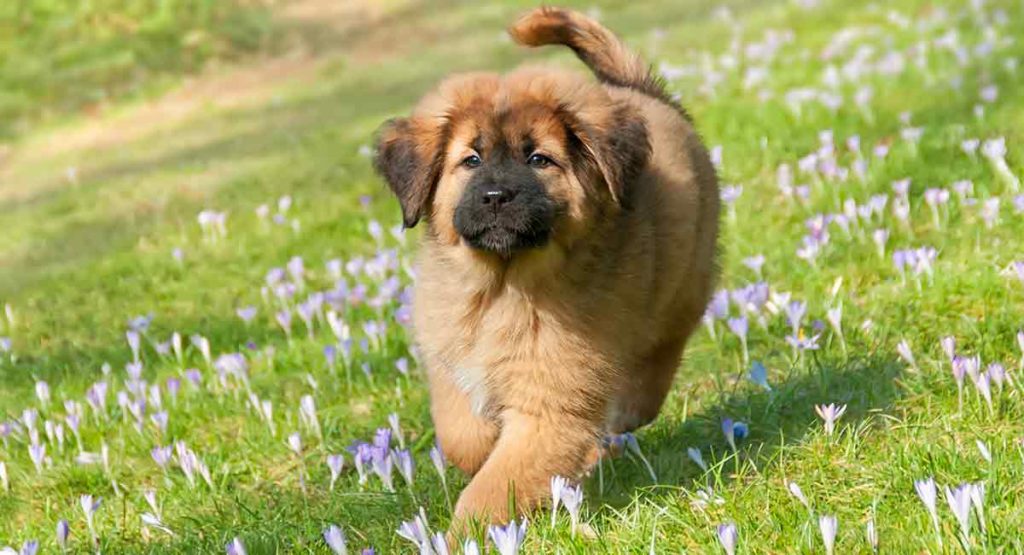
No breed captures nobility, beauty or the magic better than the Tibetan Mastiff.
This breed isn’t for everyone so you must do your background check and research before you bring a TM home. It is a lifetime commitment.
The Tibetan Mastiff is a powerful naturally protective and territorial dog. It will religiously guard your property and your family.
This also means that they will not welcome any strangers and they are very reserved with new people.
The Tibetan Mastiff is independent, obstinate and has a great depth of intelligence and character.
He does not show any characteristics of the obedient or trainable breeds that can be taught.
SOMETHING FUN ABOUT TIBETAN MASTIFFS!

- Tibetan Mastiff guard like their life depends on it.
- You must teach them socializing to keep them happy.
- They prefer to be indoors during the day.
- Their body is mostly longer than taller
- They are extremely devoted to family.
- They have a knack of killing birds.
This was all about Basset Hounds.
Let us know about your thoughts in our comment section!
Stay with us to know more about dogs and dog breeds.





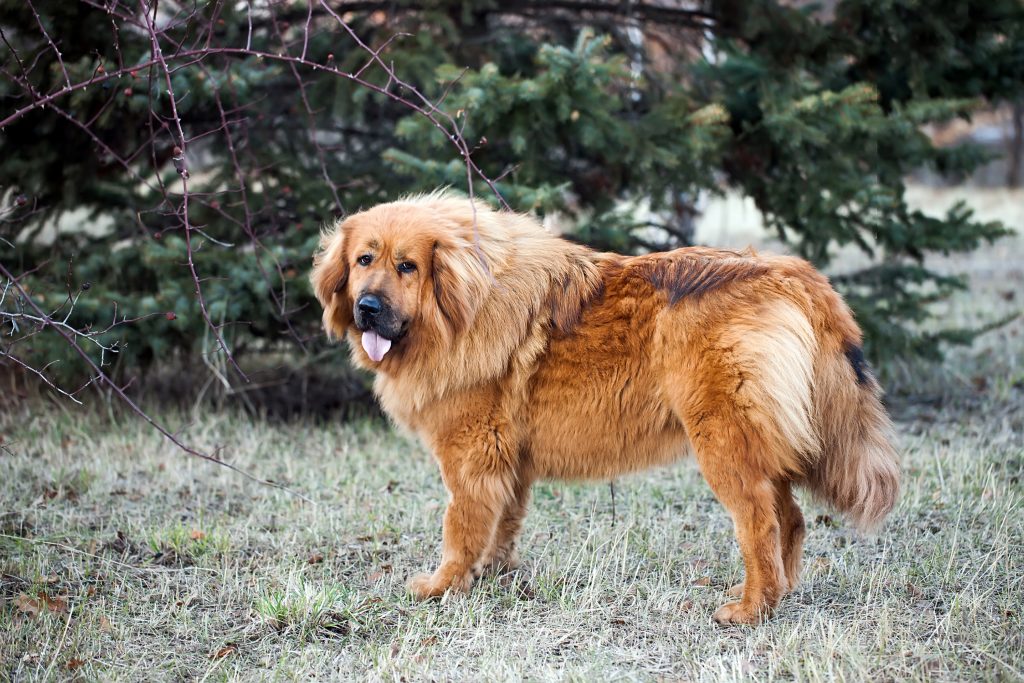
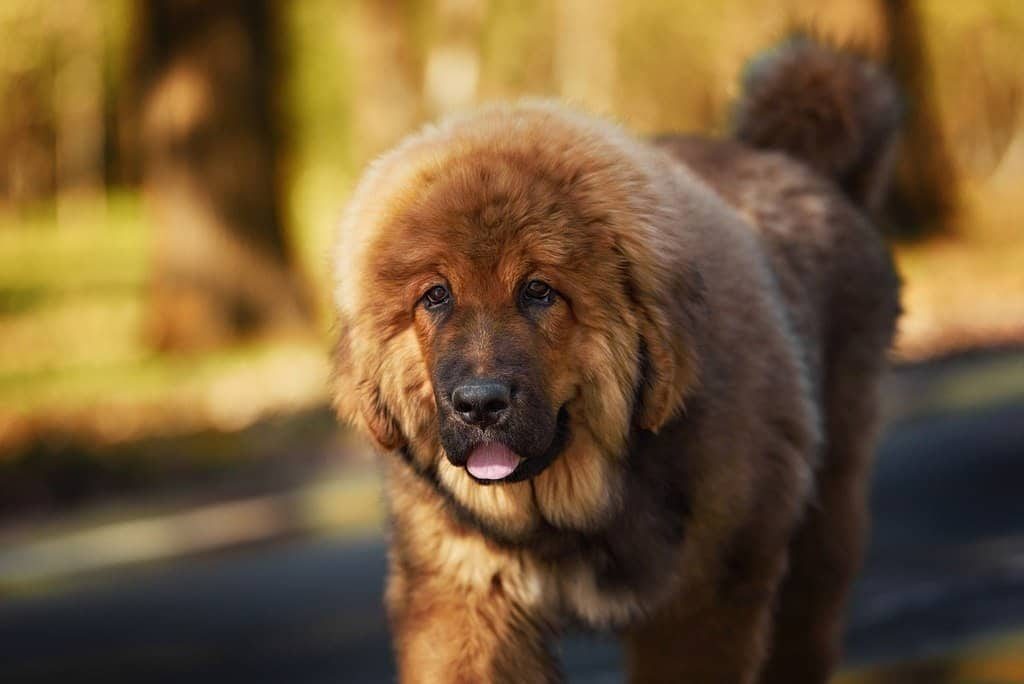
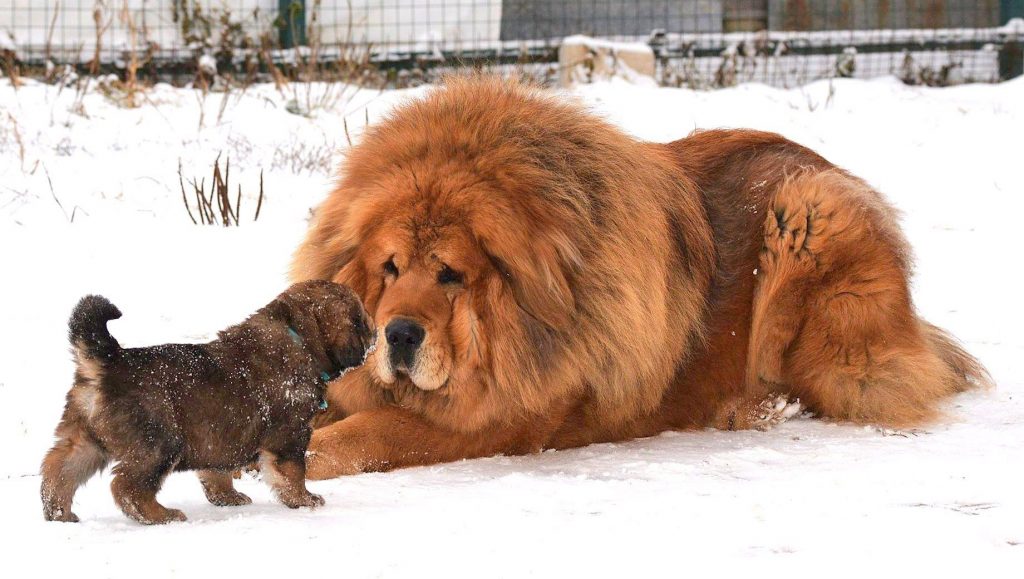
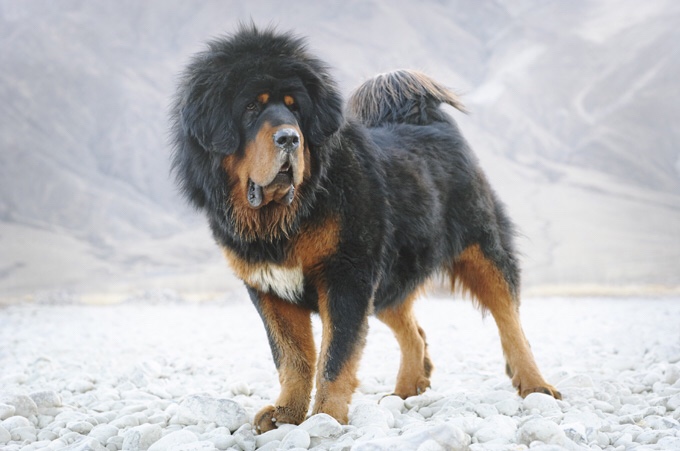








[…] Tibetan Mastiff […]
I’m getting a TM but how will I be sure it will have a mane ?
[…] Tibetan Mastiff […]